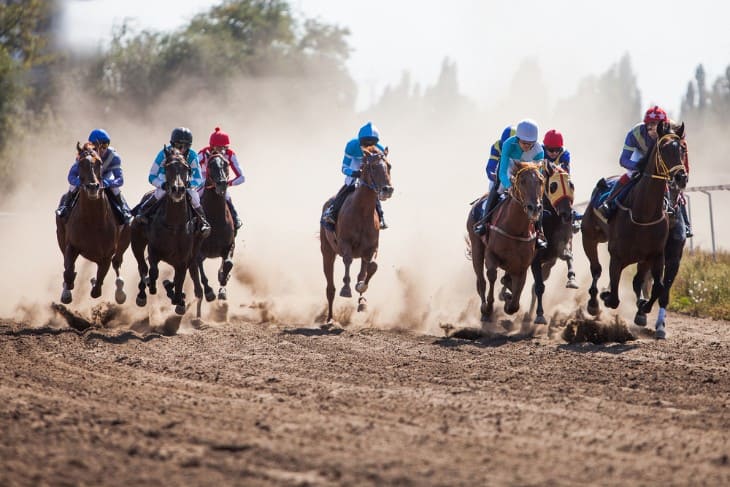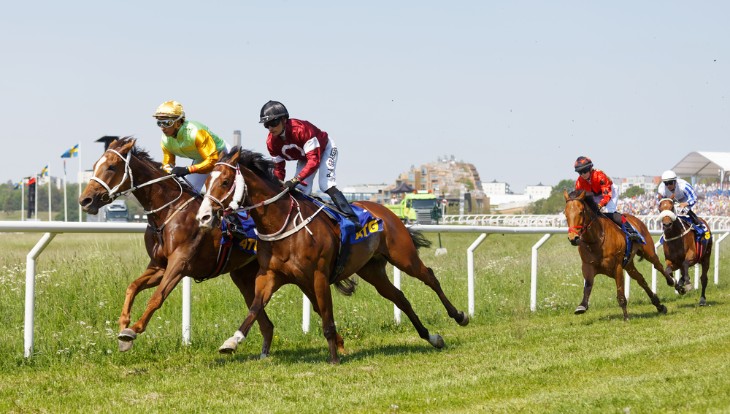Horse racing is an exciting game that attracts millions of fans and bettors worldwide. Thus, a proper understanding of various types of bets can improve your betting experience and allow you to make more money through gambling. One popular type of wagering is a patent bet. In this article, we will explain a patent bet, how it works, and why it may be convenient for your next horse racing gamble.
Understanding a Patent Bet
A patent bet in horse racing takes into account seven other bets. To place a patent bet, you only have to pick three horses. These selections should be made from different races.
If you place a patent bet, you have placed seven bets: three singles, three doubles and one treble. A single is wagered on one horse winning. If that horse wins, will the punter get paid out on that selection? Double means two horses are betting on two horses to win in two races.? A Treble involves all three horses, with each expected to win its own race, and if they do so, the player wins.
Some examples include Horse A, which will form one single (bet); Horse B, which will form another single (bet); and Horse C, which will create another individual stake by itself (three singles). You would also have combinations of two horses (three doubles). Lastly, there would be one combination where you would put all three horses together for them to win- this would be referred to as one treble (one treble).
Therefore, even when just one among your selections comes first, you still get paid out from the single stacked upon this particular animal. When there are two winners, returns are received from both singles and doubles involving such horses, while all choices winning result in obtaining the most significant payout possible from any seven stakes.
Patent bets are famous because they give multiple chances of winning. You will not go home empty-handed even if some of your selections don’t win. It is less risky than wagers, requiring all the chosen horses to come first.
A patent bet combines various bets, increasing the opportunity for any returns and spreading your risk among several picks.

How a Patent Bet Works
If you pick Horse A, Horse B and Horse C, you will have three single (bet) selections. This type of wager involves seven bets, each covering one of them.
- Three Single Bets: An individual bet on every horse winning. If these are Horse A, Horse B and Horse C, they would be staked individually. The payout would be made in case one of these animals triumphs.
- Three Double Bets: You have three pairs formed when combining two out of three horses. Horse A and Horse B, Horse A and Horse C, and finally, we have a combination between Horse B and Horse C. Thus, both horses within this pair should win their respective races prior to it paying out as double.
- One Treble Bet: Therefore, there is only one where you may place stakes for these 3 to win, hence referred to as one treble (one treble). All the above horses must win their respective races for any treble bet to pay out at all.
Suppose you put £1 on each of your seven patent bets. This will give you a total stake of £7. If Horse A wins, you have a single bet to consider, for which you can receive returns from the bookmaker for winning the race. If both A and B win, you get returns from all those bets made as singles plus the double bet made on horses A and B. If all three win, they pay out as single, double and treble.
A patent bet allows for winning even if not all selections are successful. You will still earn some money if only one horse wins. When two horses win, there will be multiple payouts. As such, this structure spreads risks while increasing the chances of return, making patent bets very popular among many punters.
Benefits of a Patent Bet
There are several reasons why horse racing gamblers choose to place a patent bet in the first instance:
- Many Ways to Win: With just three picks, there are seven opportunities to win with a patent bet (no matter what anyone says otherwise). Even if only one of your horses wins, there is still a payout from that horse’s wager. The risk is much less than it would be with any betting where all picks need to result in victory for an outcome.
- Risk Reduction: By using singles, doubles, and trebles, you spread your wagers thinning down the risk involved. Even when one or two selections do not succeed, there could still be profitable results from the remaining bets. Consequently, these types of bets provide safer options for most gamblers.
- Higher Potential Returns: If all three selections come in, you could see substantial winnings.Aside from this, single bets, double bets, and treble stakes may give rise to far greater overall returns than when simple separate wagers are placed.
- Flexibility: Players' preferences for their best strategy cannot be rigidly shaped, and a patent bet is no exception. You can select horses with different odds to balance high-risk options with safer bets. This flexibility allows you to customise your betting strategy to match your willingness to take risk and the potential reward.
- Easy to Understand: A patent bet seems quite complex, but it is as simple as putting one foot in front of the other from a different angle. The individual bets do not have to be handled separately throughout this process—once three selections have been made, all possible combinations are automatically covered by the gamble.
- All Gamblers Will Like It: Patent bets represent an ideal solution for both beginners and experienced gamblers. Their simplicity and multiple opportunities for success appeal to newcomers, while skilled players appreciate the strategic choices and high returns that can be achieved.
Generally, a patent bet provides many opportunities to win, lowers overall risks, yields higher potential returns, and is easily understandable. These reasons make it a favourite choice among horse racing enthusiasts who prefer making patent bets at any time or place.
Calculating the Cost of a Patent Bet
Finding out the price of a patent bet is vital before placing it because it will help you know how much it will cost. Seven single bets are involved in a patent bet: three single bets, three double bets, and one treble bet. Thus, for each selection you make, seven separate bets are placed.
You then multiply your stake by seven to calculate the total cost. If you wager £1 on each of the seven bets, like in this example, your total stake would be £7. This is because, within the singles, each has £1; within the doubles, each has £1; and in the treble. The sum is 1 pound multiplied by 7 equals 7 pounds.
This cost should influence your betting plans greatly. Although a stake of only £1 may seem small, combined with other parts that make up a patent bet, it’s entirely some money to be used for betting. If you were to increase your stake per bet up to £2, its overall cost would be about £14 (£2 x 7).
Consider whether or not the overall cost fits your budget when choosing a patent bet. The good thing about this type of betting is that it gives punters more than one opportunity to win, albeit all these must come at an extra cost by covering all these seven bets.
In addition, balance against total stake possible returns can also be quite helpful when considering this process involving several choices rather than just one, as such payouts may occur even if just one horse wins.
Calculating how much a patent costs is practically easy: ABC. Thus, multiply your stakes by seven, giving us our total expenditure. Always remember this expense when planning your wagers and match it with probable returns to enable proper decision-making under this circumstance.

Examples of Patent Bets in Action
Witnessing patent bets in real life is one way to understand how they work best and their potential returns. An example of this can be;
Example 1:
- Suppose you have three horses: Horse A, Horse B, and Horse C. You place a £1 stake on each of the seven bets, making the total stake £7. The odds for each horse are as follows;
- Horse A: 2/1
- Horse B: 3/1
- Horse C: 4/1
If Horse A wins, you receive a payment for the single bet on Horse A. Therefore, your return will be £2 x 2/1 = £2 plus your stake of £1, giving you a total of £3. When only Horse A wins, you lose the other six bets.
Example 2:
If both Horse A and B won, then there would be returns on singles involving both horses and a double bet involving horses A and B. Each single bet results in a return of £3. When multiplied by the odds for horses A and B (2/13), the double bet gives us £6, or in other words (6 pounds) =£6£6 +£+£7=£13, which is your collective income.
Example 3:
You get returns on all seven bets if three horses win. The singles pay £3 each. The doubles also pay £7 each (as worked out already), and the treble bet comes to £1 x (2/1 x 3/1 x 4/1) = £1 x 24 = £24, plus a return of your stake (£1), making a total of £25. In this case, you will have a return amounting to:£3 +£3+£3+£7+£7+£7+25= £55.
These examples show how a patent bet works and how the returns can vary based on the performance of your selections. However, with multiple chances to win, even if only some of your selections are successful, receiving a payout from patent bets is still possible. This has made it appealing for many horse racing bettors.
Strategies for Placing Patent Bets
- Deck Your Numbers: When placing a patent bet, use strategies that enable you to improve its winning chances while at the same time maximising its odds retention. Some techniques can be used to achieve this objective among them include;
- Check Out Those You Choose From: Each horse’s last run should be considered before placing a wager on them. Study their current forms, track conditions they have managed, and jockey performances. Ultimately, such analysis would require extra data collection and facilitate your choices regarding getting higher opportunities for winning.
- Use Your Odds Well: Don’t put all your eggs in one basket – they say! That means selecting varying odds when choosing horses to balance out your winnings if any occur or decrease amounts that you may lose in case you fail to predict right about some other animals that participate at turf once again!
- Have a look at these: Decide what amount you want to bet. Remember that you are making seven bets, which will multiply the total stake by 7; hence, ensure that it is affordable and within your betting limits.
- Betting on Value Horses: Check out horses that bookmakers undervalue. These horses offer higher returns for value bets if they win. This requires some research and an understanding of how horse race betting works.
- Stay Tuned For Track Conditions: Be aware of what will happen on the day of the race in terms of weather and track conditions because such factors may significantly influence horses’ performance. Adjust your selections accordingly to boost your chances of winning.
- Calculating Your Bet Profits: There are several calculators online that can help beginners think about probable outcomes from different wagers, including patent bets, helping them make better decisions when placing their cash on this kind of thing!
In Summary,
Different gambling options can lead to a better experience in horse racing. Bettors prefer patent bets since they provide multiple opportunities for returns. Choose your horses wisely and consider the total stake to maximise your chance of winning. Enjoy yourself while doing so!
For more information:







